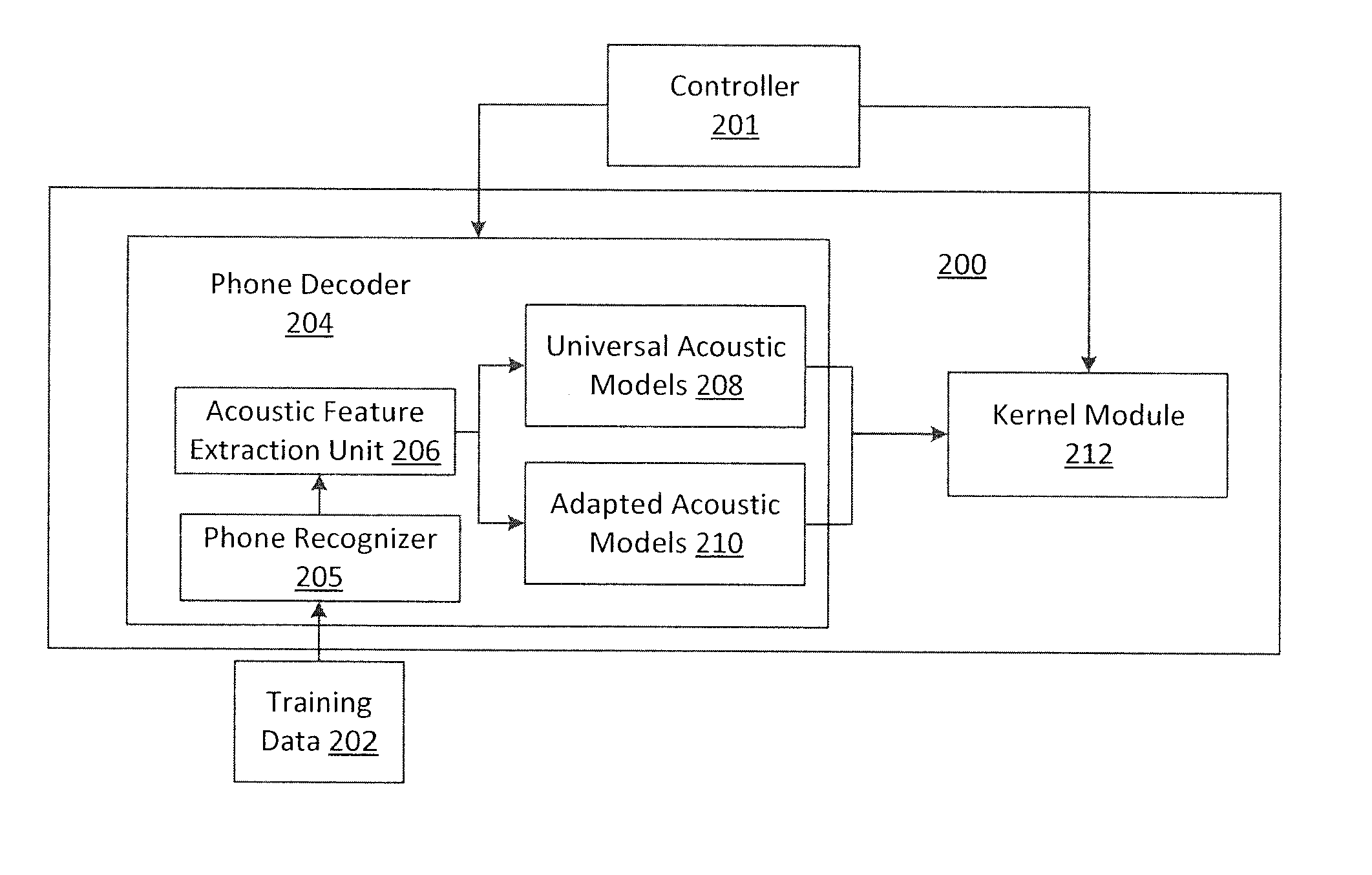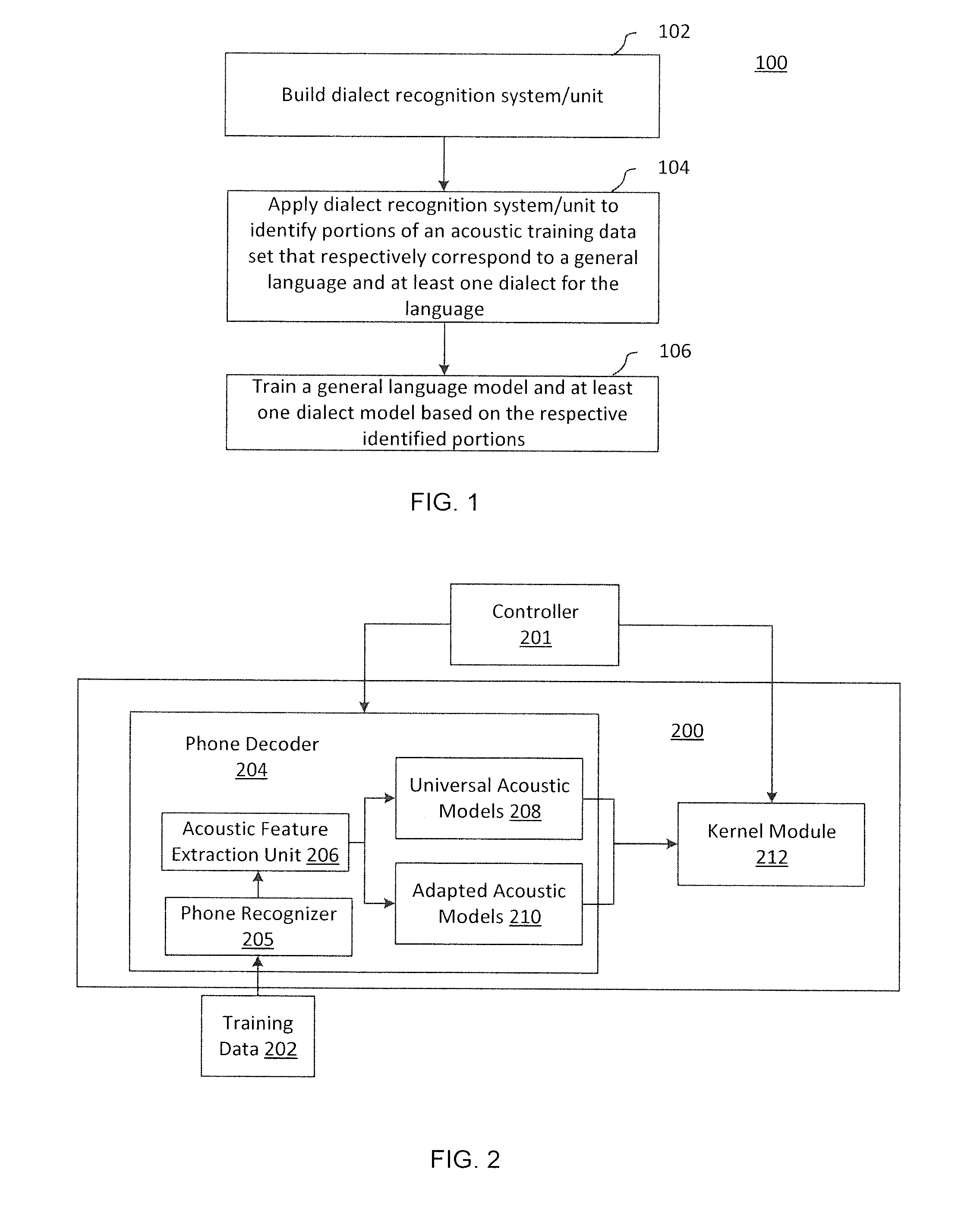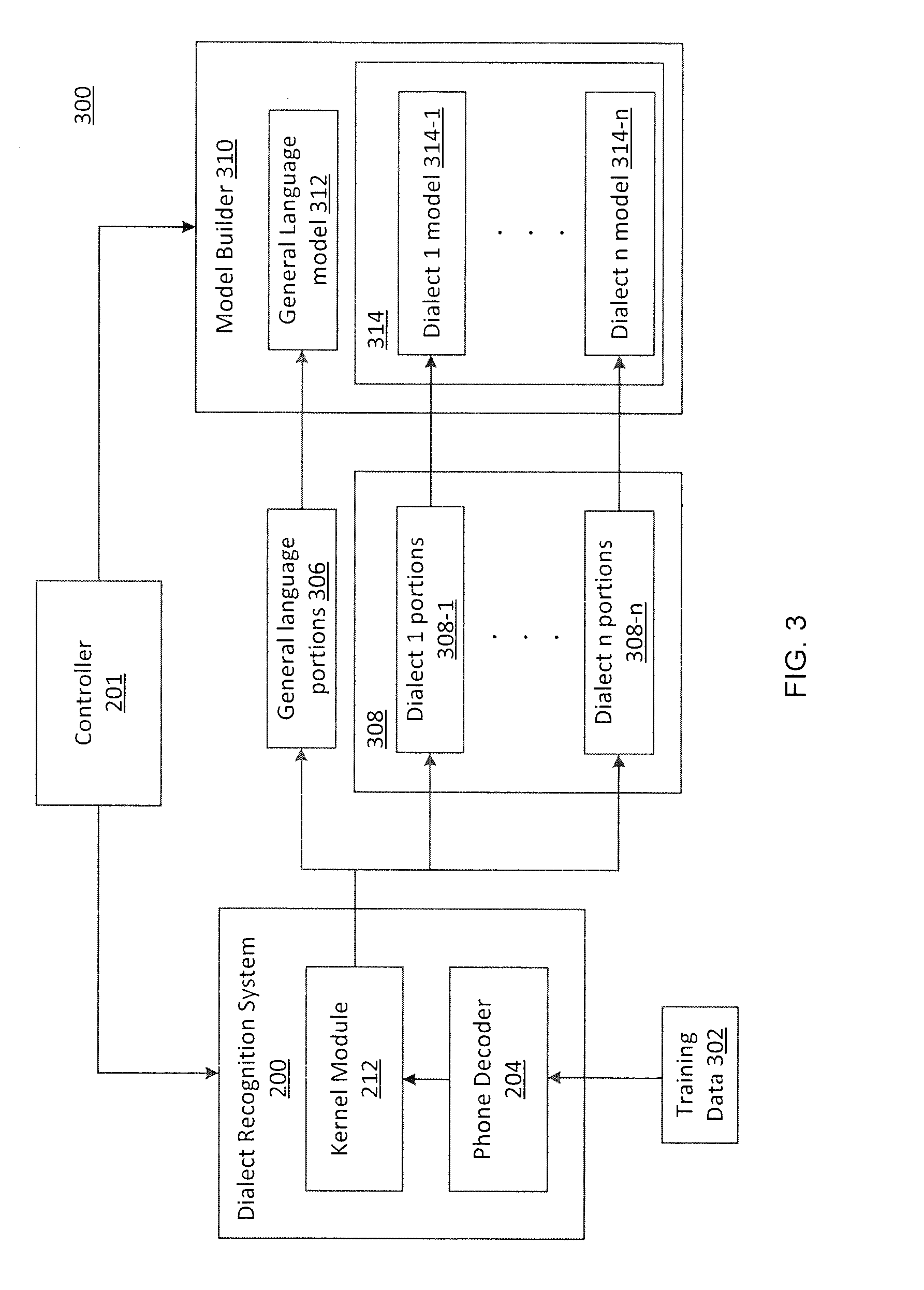Dialect-specific acoustic language modeling and speech recognition
a dialect-specific acoustic language and dialect technology, applied in the field of automatic speech recognition, can solve the problem that the problem of recognizing dialectal arabic has not been adequately addressed
- Summary
- Abstract
- Description
- Claims
- Application Information
AI Technical Summary
Benefits of technology
Problems solved by technology
Method used
Image
Examples
Embodiment Construction
[0020]Prior to discussing exemplary embodiments in detail, it is noted that a problem with current ASR systems is that they generally perform poorly on acoustic data that conforms to different dialects. One of the main reasons for the poor performance is the lack of specific training data for the different dialects. With respect to Arabic dialects in particular, the problem is especially challenging due to the lack of a well-defined spelling system and resources, such as acoustic and language model (LM) training data, and the lack of tools, such as morphological analyzers and disambiguation tools. In addition, another problem with current ASR systems is that all available data is used to train language models of such systems, regardless of the type of dialect(s) to which the training data conforms. Due to the large variations in pronunciations and lexicons, these models do not perform well on dialect data.
[0021]Embodiments of the present principles are directed to ASR systems and me...
PUM
 Login to View More
Login to View More Abstract
Description
Claims
Application Information
 Login to View More
Login to View More - R&D
- Intellectual Property
- Life Sciences
- Materials
- Tech Scout
- Unparalleled Data Quality
- Higher Quality Content
- 60% Fewer Hallucinations
Browse by: Latest US Patents, China's latest patents, Technical Efficacy Thesaurus, Application Domain, Technology Topic, Popular Technical Reports.
© 2025 PatSnap. All rights reserved.Legal|Privacy policy|Modern Slavery Act Transparency Statement|Sitemap|About US| Contact US: help@patsnap.com



